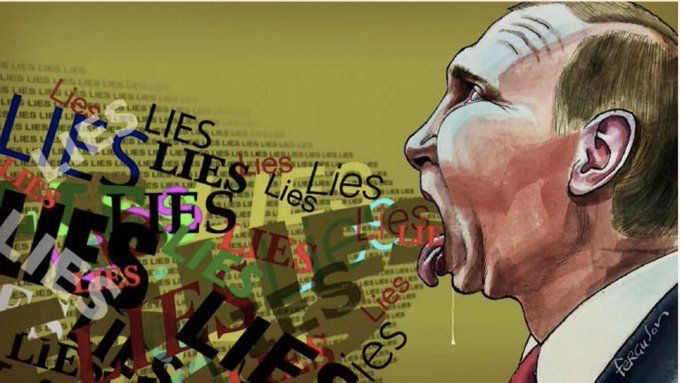Instability as a Tool of Fascist Politics
Autocratic leaders and fascist movements thrive on exploiting and deepening instabilities. Whether by economic disruption, social division, or undermining institutional norms, their goal is to erode trust in stable systems, paving the way for authoritarian control.
- Case Study: The Rise of Fascism in Weimar Germany The economic instability of post-World War I Germany, exacerbated by hyperinflation and the Great Depression, created fertile ground for Adolf Hitler’s Nazi Party. By manipulating national grievances and scapegoating minorities, they destabilized the fragile Weimar Republic, turning a democracy into a dictatorship. Learn more about the Weimar Republic and its collapse here.
- Case Study: Post-Reconstruction Jim Crow South In the United States, the Reconstruction period following the Civil War brought hope for racial equality. However, white supremacists destabilized the system by using violence, discriminatory laws, and propaganda to enforce segregation, laying the groundwork for decades of institutionalized racism. For a detailed analysis, see this JSTOR article.
Fascists employ these tactics deliberately. Propaganda fuels fear; economic disruption fosters scapegoating; eroded norms weaken resistance.
These strategies resemble perturbations in a stable fluid system—small, deliberate disturbances that cascade into larger, systemic chaos.
The Double-Edged Nature of Chaos
While fascists often engineer instability for regressive ends, chaos itself is neutral and holds the potential for progressive transformation.
In fluid dynamics, when a laminar (smooth and stable) flow becomes turbulent under external forces, it creates new energy pathways and dynamic possibilities. Similarly, in social systems, instability can empower grassroots movements to reshape society.
- Case Study: The Civil Rights Movement The turbulence caused by segregation laws and racial violence in the U.S. catalyzed the Civil Rights Movement. Grassroots leaders like Martin Luther King Jr. transformed instability into momentum for change, leveraging public outrage and legal challenges to push forward equality. Explore more on the Civil Rights Movement in Steven Kasher’s Photographic History here.
- Case Study: Anti-Colonial Struggles After World War II, the destabilization of colonial empires led to waves of anti-colonial movements. In India, Mahatma Gandhi’s nonviolent resistance turned the chaos of British imperial decline into an opportunity for independence and the establishment of democracy. For further reading, visit arXiv.org.
Physics and Politics: Lessons from Fluid Dynamics
The parallels between fluid systems and political systems offer valuable insights:
- Critical Thresholds (Bifurcation Points): In fluid dynamics, a system transitions from stability to turbulence when certain thresholds are crossed. Similarly, societal tipping points—such as the 2008 financial crisis or the Arab Spring—often mark the onset of profound change. Recognizing these moments allows movements to act decisively.
- Energy Redistribution: Turbulence in fluids redistributes energy throughout the system. In politics, instability redistributes power and influence, creating opportunities for grassroots forces to amplify their voices.
- Strategic Intervention: Engineers manage turbulent flows through calculated interventions. Grassroots organizers can adopt a similar approach, strategically directing chaos to ensure progressive outcomes.
What’s at Stake for You?
This historical and scientific analysis is not just abstract theory; it affects you directly as a citizen. Whether you live in the United States, Europe, or elsewhere, the stability of your society is constantly tested by forces seeking to exploit or manage instability.
Understanding your role in this dynamic is crucial.
- Potential Losses:
- Erosion of democratic norms and freedoms.
- Increased inequality and societal division.
- Entrenchment of authoritarian regimes that limit personal and collective potential.
- Potential Gains:
- Expanded civil liberties and social justice.
- A stronger, more inclusive democracy.
- Greater opportunities for human advancement in areas like education, healthcare, and innovation.
Your Role in Navigating Instability
As a citizen, you are not a passive observer but an active participant in shaping the outcomes of instability.
Here are concrete steps to consider:
- Educate Yourself and Others: Knowledge is power. Understanding historical patterns and the tactics of destabilization helps you recognize when they’re being deployed.
- Organize Strategically: Join or support grassroots movements that advocate for progressive change. Ensure these movements have clear goals and a vision for harnessing instability constructively.
- Engage Politically: Vote, protest, and lobby. Pressure your representatives to uphold democratic norms and resist authoritarian encroachments.
- Support Free Media and Institutions: Independent journalism and robust institutions are bulwarks against the chaos engineered by fascist forces. Support them actively.
Conclusion: Seizing the Moment
History and physics both teach us that instability is inevitable, but its outcomes are not predetermined.
Fascist-leaning forces often aim to exploit chaos for regressive ends, but with clarity of mind and purpose, grassroots movements can channel turbulence into progress.
Much like managing turbulent flows in fluid dynamics, seizing the critical moments in societal instability requires strategy, vigilance, and cooperation.
The stakes are high, but so are the potential rewards. The future remains unwritten—and it is up to us to write it.
Sources and Further Reading:
- "The Anatomy of Fascism" by Robert O. Paxton (2004)
- "The Origins of Totalitarianism" by Hannah Arendt (1951)
- "Civil Rights Movement: A Photographic History, 1954-68" by Steven Kasher (1996)
- Articles on fluid dynamics and systems instability
- Historical analysis of post-Reconstruction America on JSTOR
Support our efforts:
Get a two bucks membership here: https://buymeacoffee.com/nafoforum
Support our on-going fundraiser here: https://www.gofundme.com/f/support-disinformation-education-public-education-forum
We have a Patreon - still in construction - here: https://www.patreon.com/c/PublicEducationForum
When all else fails - get a shirt here: https://www.bonfire.com/store/nafo-forum-shop/






